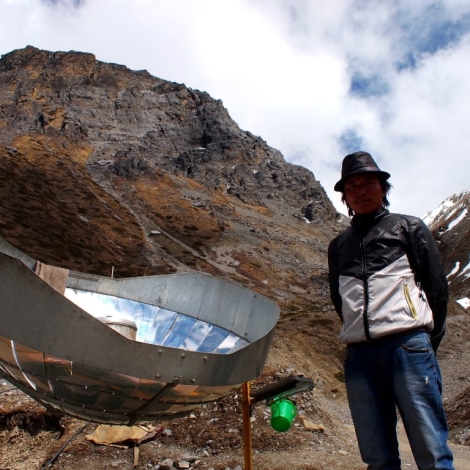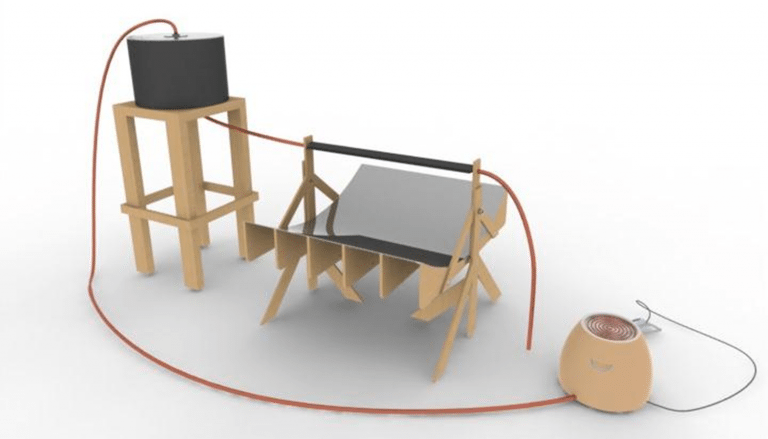Smoke frames the memories of the trail for trekkers in Nepal. It rolls from a yak-dung fire warming a room above a river valley, a wood stove boiling lentils and the tailpipes of buses on gravel roads. The haze seems intertwined with the back roads. And it contrasts deeply with parabolic reflectors. The reflectors are the shiny faces of solar cookers that now dot the high-altitude villages.
These smoke-free anachronisms look like strange progress. There they are, side by side with the descendants of prehistoric tools such as yak-pulled plows and hand looms. In the wetter climates and during wetter months they go unused, overturned and collecting sooty snow on their domes. But across the passes in rain shadows below the peaks, nearly every solar cooker heats a kettle at its focal point.
The government encourages it. Nepal’s Alternative Energy Promotion Centre subsidizes half of the cost of each solar cooker. It also helps communities install micro-hydro power plants, solar panels, biogas digesters and wind turbines. About 12 percent of the population has access to renewable energy, the center reports, and it tries to increase that rate. These are a few of the solar cookers and other artifacts of energy production spotted along the Annapurna Circuit this year.

A solar cooker warms a kettle and dries laundry. Photo by Rob Goodier/E4C

Three kinds of energy production make appearances outside this guest house: There’s a passive solar water heater on the roof, a stack of firewood and a solar cooker. Photo by Rob Goodier/E4C

Photo by Rob Goodier/E4C

Solar cookers get less use in the wetter climates. Photo by Rob Goodier/E4C

Photo by Rob Goodier/E4C

Photo by Rob Goodier/E4C

Wood fuels most rural mountain homes. Photo by Rob Goodier/E4C

Wood fires cook most meals, but the kitchens are ventillated with chimneys. Photo by Rob Goodier/E4C

Solar panels provide electric light, music and sometimes Wi-Fi. Photo by Rob Goodier/E4C

A solar plant for a village. Photo by Rob Goodier/E4C

A micro-hydro plant along a stream. Photo by Rob Goodier/E4C

